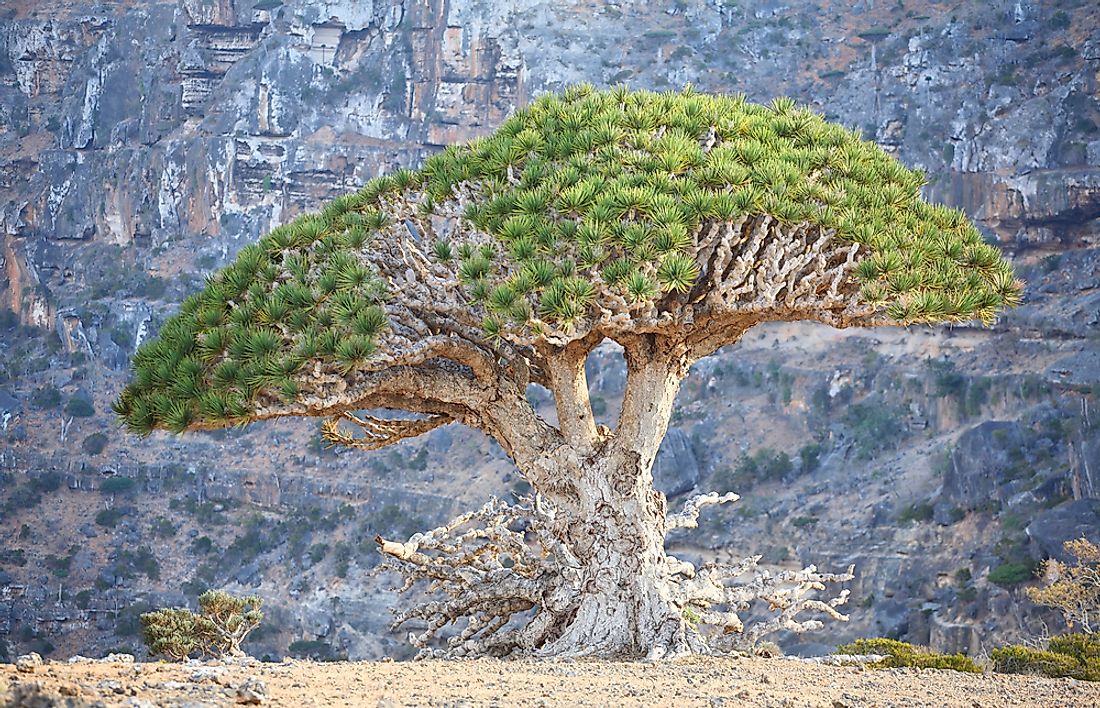Why Is The Dragon Blood Tree Called So?

A Dragon Blood Tree belongs the species D.cinnabari. It has an appearance that is rare and an inverted shape assuming that of an umbrella. In addition, the plant has a large compact crown. The Dragon Blood Tree is a self-renewing species given its name because of its dark secretion called ‘'dragon's blood.''
Biological Description and Adaptation
The Dragon Blood Tree flowers mostly around February but the flowering vary depending on the region. The flowers of the Dragon Blood Tree, in most cases, grow at the end of the tree branches. Moreover, the plant produces small sweet smelling green and white flowers. Its fruits would be fully developed into fleshy berries after about five months. These berries gradually change from green to black and finally to orange-red colour with one to three seeds when ripened. Birds mostly eat and disperse the fruits.
The Dragon Blood Tree has an unusual shape, which enables it to survive in arid areas that contain less nutrients and soil, for example, the top of mountains. The large compact crown of the tree gives a shade that lowers the loss of water into the atmosphere and helps in the maturity of the growing young plants under them, giving the reason why these trees grow close to one another.
Importance of the Plant
The Dragon Blood Tree roots produce a gum-secretion that is used with clean water to make a stimulant. Some of the residents of Socotra Island used the Dragon Blood Tree as a medicine plant to cure most diseases. It is also used as a paint by the violin-makers in Italy. Interestingly, the plant was used to make toothpaste in the eighteenth century. The Dragon Blood Tree has some slightly bluish red secretion called the dragon's blood that is used as a dye and a medicine around the Mediterranean. Therefore, the Dragon Blood Tree can be yielded for their bluish red secretion, the dragon's blood.
Threats and Conservation
Human activities such as woodcutting, logging, and overgrazing due to the increased population and industrial development have affected the Dragon Blood Tree habitats. The Dragon Blood Tree is a widely spread species, but it is incomplete because of settlements that have occurred in its habitat. Other human activities that have led to the drop in the plant’s population are feeding livestock with their flower buds and fruits resulting to non-flowering trees. Human activities have also resulted in decreasing period of rainfall and hence increased arid environment, therefore, reducing D.cinnabari habitat.
Harvesting of the D.cinnabari secretion and the use of its leaves to design ropes is another threat to the species. Today, the Dragon Blood Trees can be used to construct beehives, but it has been banned as it shows how the species is endangered. A Dragon Blood Tree is an umbrella species which has helped in the creation of management programs; it is used to select the related conservation decisions because protecting this trees enhance preservation of other tree species.







